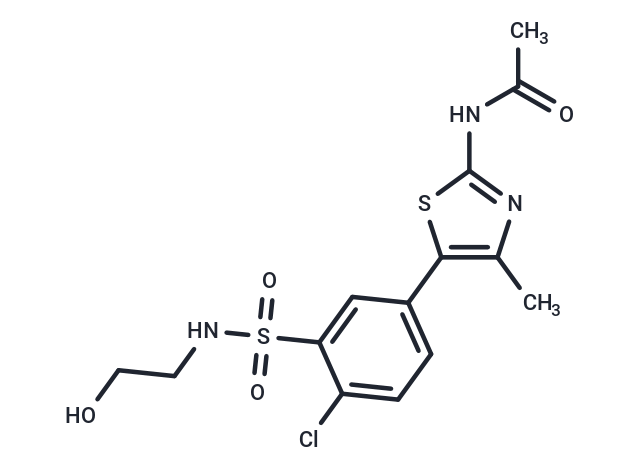Shopping Cart
- Remove All
 Your shopping cart is currently empty
Your shopping cart is currently empty


| Pack Size | Price | Availability | Quantity |
|---|---|---|---|
| 2 mg | $29 | In Stock | |
| 5 mg | $48 | In Stock | |
| 10 mg | $73 | In Stock | |
| 25 mg | $133 | In Stock | |
| 50 mg | $223 | In Stock | |
| 100 mg | $329 | In Stock | |
| 200 mg | $475 | In Stock | |
| 1 mL x 10 mM (in DMSO) | $54 | In Stock |
| Description | PIK-93, the first potent synthetic PI4K inhibitor, exhibits an IC50 of 19 nM and also inhibits PI3K |
| Targets&IC50 | PI3K |
| In vivo | At concentrations ranging from 0.5 |
| Kinase Assay | Assay of PI3Ks: IC50 values are measured using a standard TLC assay for lipid kinase activity. Kinase reactions are performed by preparing areaction mixture containing kinase, PIK-93 (2% DMSO final concentration), buffer (25 mM HEPES, pH 7.4, 10 mM MgCl2), and freshly sonicated phosphatidylinositol (100 |
| Cell Research | For actin staining, dHL60 cells are preincubated in suspension with PIK-93 or vehicle for 40 min, centrifuged for 5 min at 2000 rpm at room temperature in a J6-B centrifuge, resuspended in mHBSS containing the respective agent at the same concentration, allowed to stick to fibronectin-covered coverslips, and subjected to stimulation with a uniform concentration of 100 nM f-Met-Leu-Phe (fMLP) for 3 min. Cellsare fixed in 3.7% PFA and stained with 10 units/mL rhodamine-phalloidin for 15 min.(Only for Reference) |
| Alias | PIK 93 |
| Molecular Weight | 389.88 |
| Formula | C14H16ClN3O4S2 |
| Cas No. | 593960-11-3 |
| Storage | Powder: -20°C for 3 years | In solvent: -80°C for 1 year | Shipping with blue ice. | |||||||||||||||||||||||||||||||||||
| Solubility Information | DMSO: 39 mg/mL (100 mM) | |||||||||||||||||||||||||||||||||||
Solution Preparation Table | ||||||||||||||||||||||||||||||||||||
DMSO
| ||||||||||||||||||||||||||||||||||||

Copyright © 2015-2024 TargetMol Chemicals Inc. All Rights Reserved.